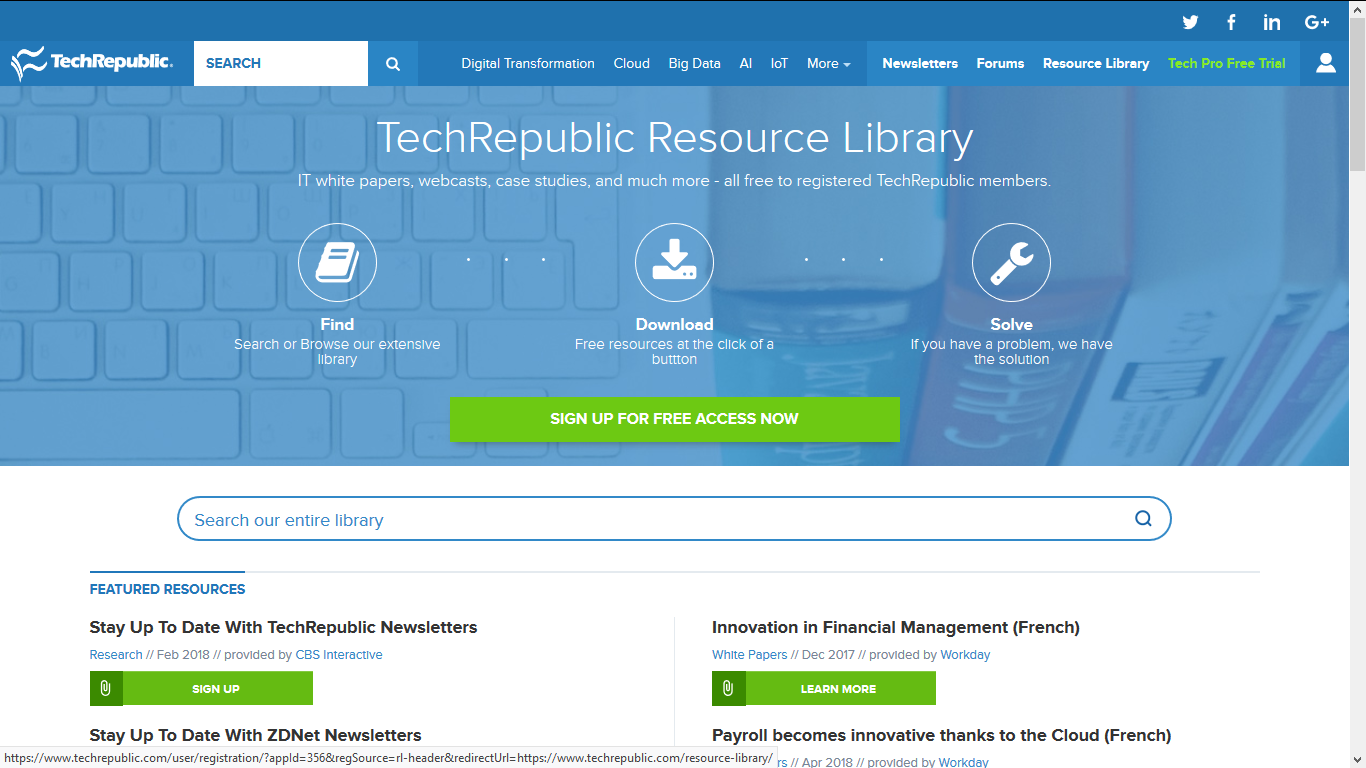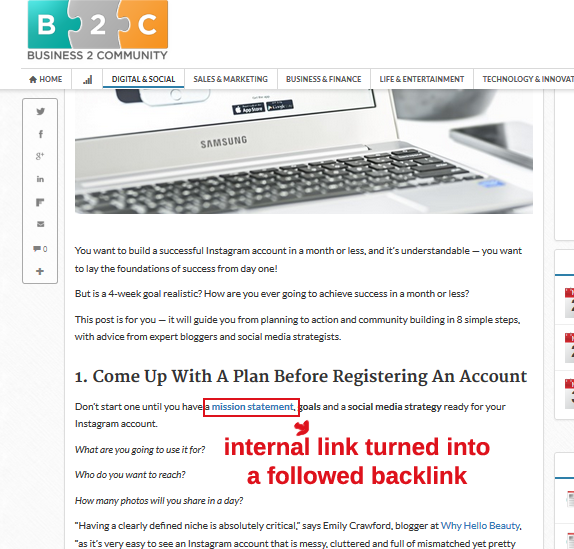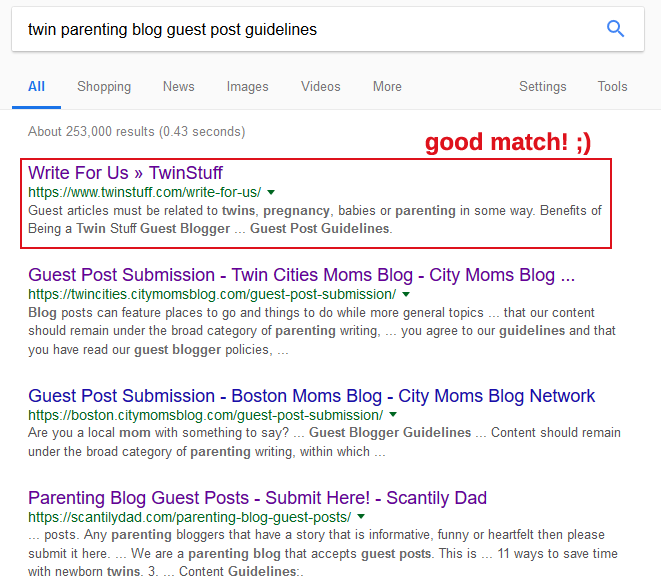
Imagine you're planning to start a new niche business, a big & tall clothing boutique, in your town.
There's a market for this uniquely-tailored clothing in your area, and people can't find what they need at the existing stores.
You're researching and writing up your small business plan.
Like every good businessman wanting to grow a business, you're making plans to advertise your boutique to get a horde of enthusiastic customers queuing in front of the entrance door.
You know your target customer base. You also have an idea of how to advertise to them.
Now, you need to do some competitor research.
Which other boutiques in town will be your most direct competitors? Who is targeting the same customer base?
And, more importantly, how are they advertising to that customer base?
Naturally, you'll borrow from their playbooks to make sure you're reaching your customer base as effectively.
From there, you can explore the marketing approaches they haven't touched yet.
The common thread in all of the above is that you're not trying to reach out to the general population with general marketing: "come one, come all!" doesn't work all that well.
Your research, planning and marketing approaches are all revolving around a niche customer base who are interested in the niche products you're selling.
Likewise, the best niche backlinks don't try to reach everybody on the internet and they don't send generic linking signals to search engines.
Niche backlinks are targeted advertising. They're relevant to your specific focal area, and they reach your target audience without wasting your time and money on non-converting traffic. They boost your authority, they make sense for SEO and Google will reward you for appearing in the places that make the most sense for the topic of your website.
In other words, they're the right backlinks for your niche website!
Now comes the tricky part—figuring out what will work best for you and decision a linkbuilding plan. Follow these three steps to get started in the right direction.
3 Steps to Find Out Which Backlinks Work Best for Your Niche
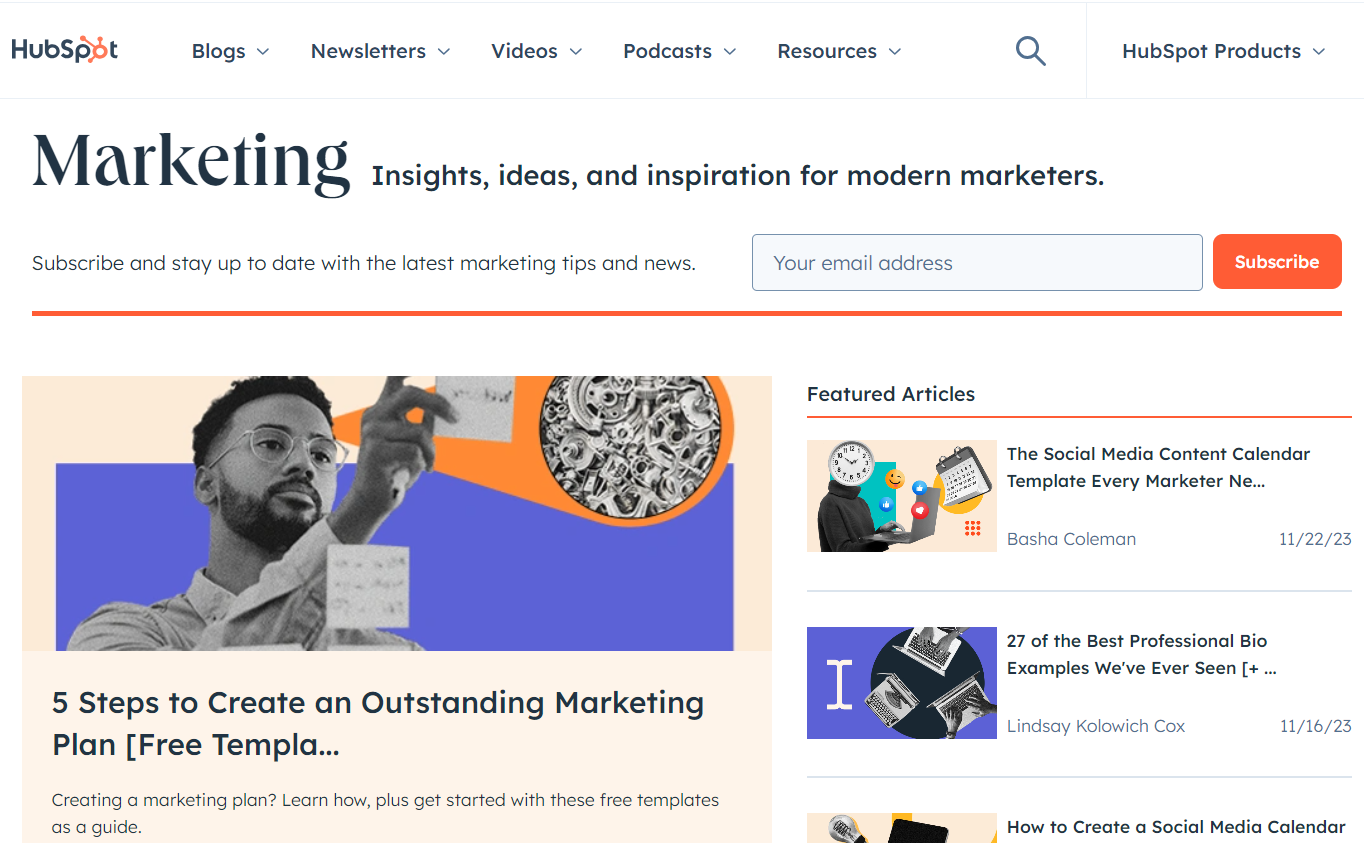
Just three steps?
Hell yeah!
And it comes down to one simple thing. You need to really know your niche and your website's goals. Then you'll understand exactly what kind of niche backlinks to go after and how to obtain them (this will be your linkbuilding strategy).
We'll talk about the 14 ways to figure out that second point (how to obtain them) in fine detail in the next section of this post. Here we'll focus on how to know which backlinks to go after.
Step 1: Study the Niche
This is your market research stage that will help you build a strategy. You need to learn:
- what kind of content your audience loves and is more likely to link out to, so you know exactly what to create to attract the right people. Do people in your niche post lots of info-packed infographics? Instagram posts? Memes? What gets the most likes, hearts and shares?
- how your audience interacts with that content and how that interaction can lead to link opportunities. Do they share on social media? Do they love to comment and have lively discussions? Do they ask tons of specific questions in niche forums?
- which related niche websites have the potential to bring the most traffic to you and will be most valuable from an SEO standpoint. The basic question here is: Where else does your audience go for information? Where can you share your content, write guest posts, build backlinks and respond to audience questions?
Your niche has its own unique topics and purposes that make it distinct from other niches or industries.
For example, the marketing niche will differ from the gardening niche because the former audience spends more time online than off.
Audiences in the marketing niche tend to be more interested in professional development, networking and showcasing their talents, and they're also more interested in innovations, predictions and projections. On the other hand, gardening niche audiences may more be looking for tried-and-true practices, traditional knowledge and friendly peer-to-peer support.
So, following this, those marketing audiences will want to visit marketing communities, prominent blogs allowing commenting and maybe Linkedin to get that information while also showing off what they know and meeting professionals.
Gardening hobbyists, on the other hand, will be interested in how-to guides on growing certain species of plants and how to care for them across the seasons, and they're not necessarily looking to engage in conversation or show off anything—instead, they may need a Q&A forum to voice questions and concerns for help from more experienced gardeners.
With this knowledge, you're aware of what your audience truly wants and where they go to find it. That's where you'll put your backlinks.
See how that works?
Step 2: Study the Competition
You'll want to to see where your competitors are growing their reputation, which terms they're ranking for in the SERPs and where they're getting linked to as the authority.
Start off with a complete competitor website analysis. This includes everything from their domain name, blog design and published content to their SEO strategies on-page and off.
Of course, today we're focused on getting the best backlinks.
Step 3: Study Yourself and Know Your USP
You may be running a great website, and you know exactly what your niche is.
But knowing the niche isn't enough.
You niche might be email marketing—but there are plenty of other websites out there in the same niche. And they're not all the same. To be competitive, you need to have a unique angle or subniche.
When you go after niche backlinks, you need to be able to answer the question:
"What's my angle in the niche with this website?"
What specific topics are you focused on? Are you writing more about "email marketing for nonprofits," "email marketing for lawyers" or "automated email marketing."
It's clear that each of these angles will entail different topics of conversation, reach out to different audiences and sell different products or services.
As a consequence, your niche linkbuilding goal is to go after exactly the right audience. In the example cases above, you'd want to reach out to nonprofits, lawyers and busy marketers who need desperately to automate things, respectively.
It all comes down to having a clear vision for your product/service and distilling that in your Unique Selling Proposition/Point, or USP. Take some time to develop your USP before you really begin linkbuilding. You need to build links that showcase your USP and appeal to the audience to whom the USP would be most appealing.
Alright! You know your competitors, your audience and your own USP. You're ready to build your niche backlinks.
The following strategies are designed for linkbuilding in niche industries.
I labeled each one as Outreach First (these involve research and outreach before content creation) or Content First (these involve content creation before targeting and outreach).
There's also a quick summary of each strategy so you can tell at a glance if it's a good option for you, since I know you're busy.
1. Broken Link Building in Your Niche
Type: Content First
Summary: You actively seek broken links that you can be updated with links to your content, then contact the webmaster about it.
Broken link building is a potentially low-effort technique that can work well in every niche and bring in good backlinks.
The way it works is easy:
- Scour the web for content in your niche that's similar to what you write about (or what a competitor writes about).
- Once you find interesting pages, search for broken links in the text.
- Any broken link that you could effectively replace with a link to one of your resources is a potentially great backlink.
- Reach out to the webmaster through email and ask if you could fix their old broken link with your fresh content.
I define this one potentially low-effort because you may or may not have the right replacement content available at the time you find the broken link.
In the case that you have the right content on hand, this is easy peasy.
In the case that you don't, you'll have to put in the effort to produce that great content before emailing the webmaster. I'd only move forward with this if the content is otherwise valuable to you without the backlink, since the webmaster may not update the broken link upon your request.
You can apply the same technique to broken backlinks pointing to your website to reclaim them.
Example Niche Scenario
Imagine a marketing expert who runs a blog and regularly produces guides, case studies and interesting podcasts for her readers.
The expert decides to Google blogs in her niche to find out if there are broken links in content that she can build a broken linkbuilding outreach campaign around.
She finds broken links on selected pages using a link status checker tool that operates as a browser extension, Check My Links. All she has to do is browse other sites in her niche and scroll through the pages to see what's broken:
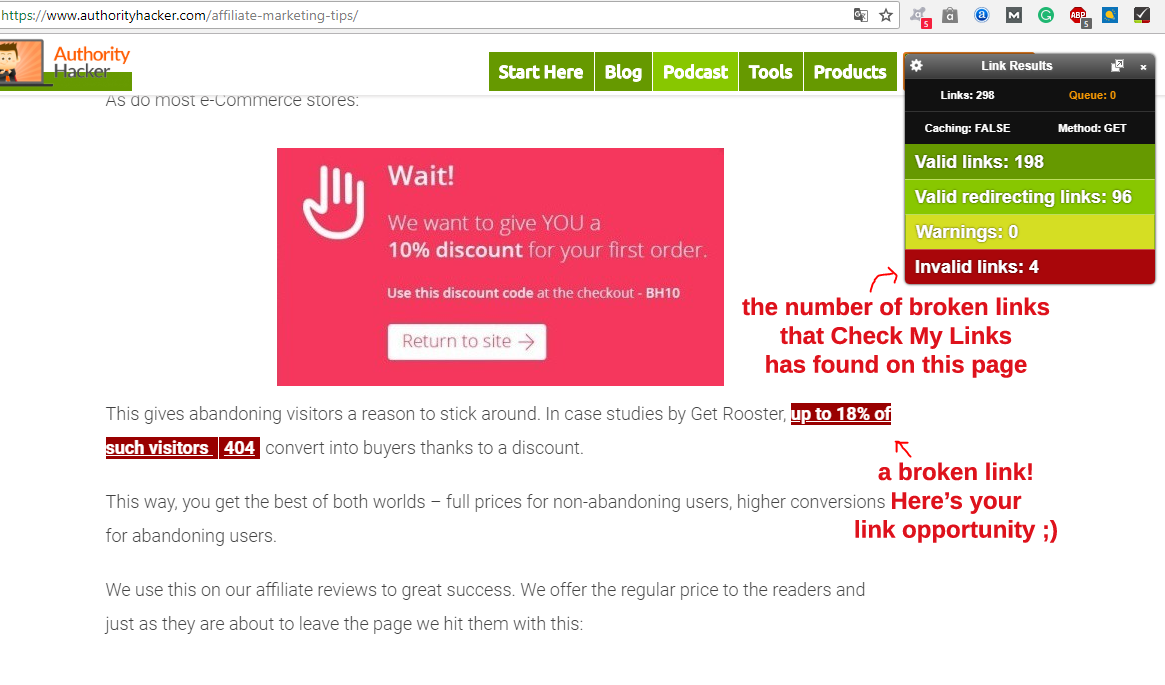
Bingo! She ran into a 404 error for a link that previously led to a case study about site visitors and conversions.
She can now retrieve the webmaster's email and reach out to let them know she has a great retargeting case study that can effectively replace the missing one—and if she doesn't have it already, she can build it!
Resource Box
You can use the previously mentioned Chrome browser extension called Check My Links to verify the status of links on a page you're visiting and note down broken links you want to fix with your own URL.
It's an ideal tool for broken link building.
2. The Skyscraper Technique
Type: Content First
Summary: You create great content based on what the niche is missing, then you pitch it to relevant outlets.
The Skyscraper Technique was first introduced by Brian Dean of Backlinko and it works because it's founded on the simple rule of scientific publication—you produce new work based on existing work by others.
How to approach the technique:
- Choose a keyword or topic to target. See what's already published, already widely shared or ranking on page one of Google when you search the keywords.
- Find the amazing content that's performing best and make it your goal to produce something better, something outstanding, the ultimate resource!
- Read the existing resources thoroughly and note down what they discuss and what you feel they're missing.
- Use your notes to craft the outline of your amazing new article, guide or e-book. It should cover everything that those high-performing pieces of content cover—and then some!
- Produce the piece of content, adding considerably more knowledge and more value, and include links to the great resources you based your work on. Make sure it's longer, more in-depth and more expansive.
- Publish your piece and pitch it to webmasters.
Example Niche Scenario
Say you're in the B2B software industry. You're exploring industry news sites and blogs that link back to guides and helpful resources for businesses who need top-notch software.
One of these may be the well-known TechRepublic with its Resource Library packed full of white papers and industry guides:
You look at these guides first and then refine your search with the first results in Google. You find some amazing event management guides for organizations.
Since you also cover event management with your software, you want to create a resource (say, a guide) that's better and more in-depth than everything you've found so far. You'll cover everything they have and more, especially focusing on the areas that your software masters.
You create this guide, publish it and then reach out to the industry news sites and blogs asking if they'd be interested in adding your guide to their pages and/or listings (including TechRepublic). Even before your start scoring backlinks, you should see this incredibly rich content climb the Google SERPs.
Resource Box
Use Google search terms like "[your niche] ultimate guide" and "[your niche] the complete guide" to find in-depth resources that you can base your work upon.
SimilarWeb could also give you great insight into websites that are occupying the same niche and working with a similar USP, as well as their most successful content.
3. Pitch to Niche Bloggers
Type: Outreach First
Summary: You target bloggers to whom you'll pitch your existing content for link building.
Pitching resources to bloggers is a time-proven technique that webmasters have been using for years.
The process is simple and intuitive:
- Pick great content from your website that you want to build links for.
- Scour the web for well-reputed blogs in your niche, especially those that cover your most important niche topics.
- Email the blogger and ask if they'd be interested in including a link back to your content in one of their current or future posts.
Example Niche Scenario
A fitness brand published a brand new guide for their bodybuilding audience. Great!
Now, this guide needs backlinks to stand out in search engines and quickly gain the favor of bodybuilders and fellow bodybuilding bloggers.
The marketing guy at the brand goes to Google and look for high-quality bodybuilding blogs that have great posts covering the same (or related) topic as his fitness guide. Here's a glimpse:
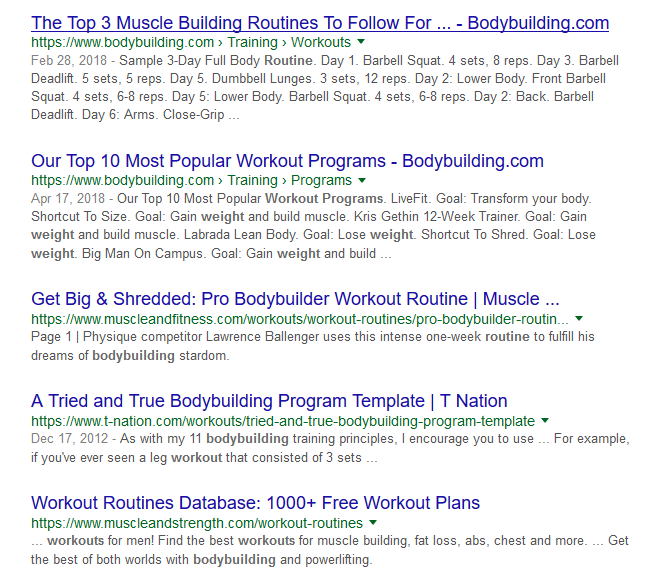
This is when he reaches out to the bloggers and asks if they'd be interested in adding a link back to the brand's bodybuilding weights program guide in their current post because he knows it will be helpful for their readership of bodybuilders.
Hint: The marketing guy adds a few "quality credentials" to make his pitch more authoritative, such as any award or testimonial the brand received in the bodybuilding niche.
Resource Box
We have threereally cool guides (with templates) on the SEOptimer blog that I recommend you read:
Link Building Outreach: 6 Email Templates to Build Solid Backlinks
How to Ask for Backlinks Without Begging (Plus Outreach Email Templates)
How to Get Backlinks from Bloggers: 7 Tips for Linkbuilding Outreach That Works
One tip from my experience as the blogger being pitched to: Don't pitch your content to a blog in a different niche just because they once mentioned something in your niche in one of their posts!
It could make sense for them to include something similar once, to add an anecdote or to make a comparison, but most likely they won't be doing it again because it doesn't provide value to their audience.
4. Join Niche Communities
Type: Outreach First
Summary: You work to create relationships first and then you ask for links.
The great thing about niche communities online is that you can get in touch with hundreds of bloggers and webmasters in your niche, get involved in topics that interest everyone, and eventually develop ongoing professional relationships that can open up many opportunities for collaboration and, of course, link building.
Here's how to leverage niche communities for links:
- Join highly-trafficked and active communities in your niche.
- Get involved in relevant threads, especially threads you can contribute to strongly with your expertise.
- Save any interesting contacts contributing to the discussions.
- Verify that the new contacts have a website in the niche.
- Create the relationship: Respond to their threads and comments and use the private message option from time to time.
- Get talking about websites and opportunities for growth.
- Offer a resource to link back to (or a friendly but relevant link swap).
Example Niche Scenario
A personal finance blogger joins a Facebook group for bloggers in the personal finance niche and starts participating in weekly discussions. There are these two members who regularly post great comments and were even helpful to him a couple of times.
He decides to send them private messages to learn more about them and ask if they have websites. Looks like they do!
After some thorough research on their websites, the blogger finds out they truly offer some great content to personal finance readers, so he decides to continue building this relationship until he can offer his personal finance resource to possibly link out in their posts (would they be so kind to consider it?) or a link swap (they give him a personal finance resource to link back to in a relevant post, he gives them his to link in their content).
Here's the chat message template he uses:
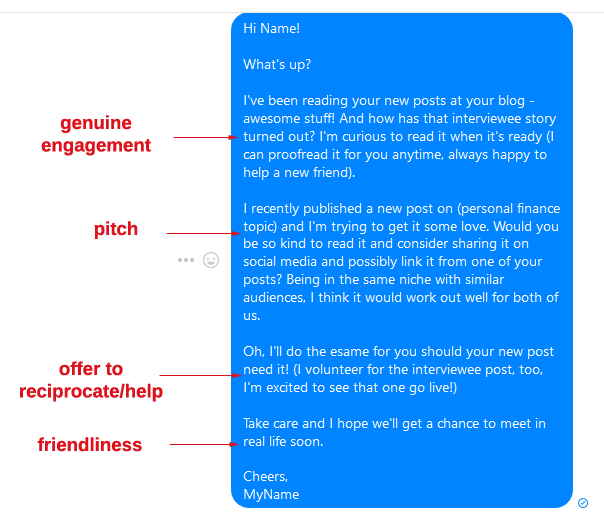
Resource Box
Search Google and social media sites, like Facebook, for key terms like "[niche] community" or "[niche] forums" or "[niche] bloggers" to find good communities in your niche.
If you're interested in communities that challenge their members to reach specific goals, you can use "join [niche] challenge."
5. Create Niche Infographics
Type: Content First
Summary: You analyze your niche and create an infographic you can then pitch to niche sites.
Presenting highly-structured and sometimes complex information in an easily-digestible visual fashion, infographics have always been a huge attractor for backlinks.
People love visual content. And they love to share it with their audiences. Simple.
Brian Dean of Backlinko even combines them with guest posting in what he calls "guestographics" and the strategy helped him boost organic traffic by 963%.
You can pitch infographics like any other content. See techniques #1, #3 and #5 in this post for tips.
Example Niche Scenario
You run a social media blog and recently created a sophisticated infographic on social trends in 2018.
You Google: social media blog "contact us"
Then you search the results for small-to-medium sized social media blogs (the big ones are generally off-limits) that have a contact page for you to pitch it.
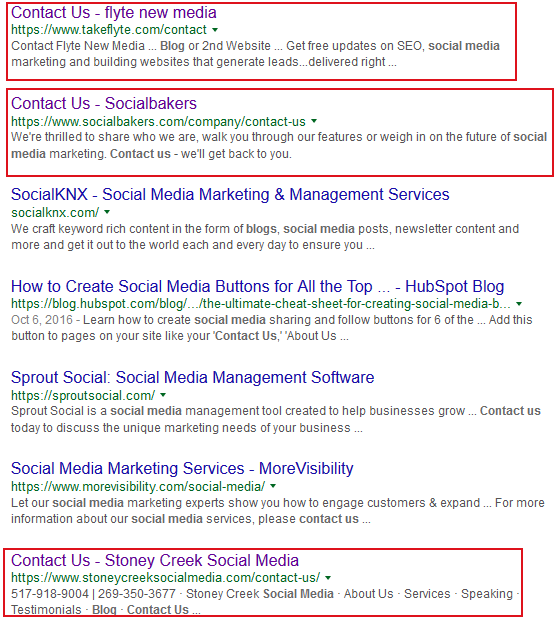
Even better if they already have posted their own or others' infographics in their posts. This means they're interested in infographics.
Once you find the right blogs, you contact the webmaster and pitch your infographics, explaining why it could be relevant and helpful to their readers (shows that you know the blog).
Resource Box
Read our guide on how to build quality backlinks with infographics: It guides you through the process step by step and tells you where and how to find what you need to produce and pitch your infographics.
If you can't afford to hire a graphic designer to create your infographics, you can use Canva to do it yourself for free.
6. Syndicate Your Content in Niche Outlets
Type: Content First
Summary: You take your content to niche outlets to turn internal links into backlinks.
Syndication is one of the easiest ways to obtain niche backlinks, because you're the one who edits those backlinks: When the outlet approves your content for syndication, any internal links within the text of your article will turn into backlinks one the syndicated page.
Easy as one-two-three, isn't it?
Example Niche Scenario
Imagine that you wrote this amazing inbound marketing case study and you want to get it in front of as many eyes as possible.
Your free time is in short supply. You don't have time for guest posting and you want to obtain some backlinks and coverage quickly while you scour the web for more link opportunities (see broken link building and resource pitching).
So, you open Google and search for internet marketing outlets where you can syndicate your case study and involve the community in comments and social shares, earning a backlink in the meantime, including any internal links you included in the article.
That's how one of my articles scored backlinks from Business2Community:
Resource Box
I found Neil Patel's "syndication 101" guide to be pretty good at explaining the pros and cons of syndication and how to do it well to avoid content duplication issues.
For marketing and SEO content, Business2Community is currently the best outlet to syndicate your content and get tons of traffic and shares in addition to backlinks.
LinkedIn Pulse is another great option for any niche to spark discussion and build backlinks.
7. Guest Posts on Great Niche Blogs
Type: Outreach First
Summary: You pitch a guest post idea to blogs that you already analyzed.
Who doesn't know the benefits of guest posting?
Authority and visibility in the niche, the sharing of great ideas, branding and, of course, backlinks.
To make sure your guest post pitch is accepted, follow these steps:
- Google blogs in your niche with a search string like "(niche) guest post guidelines" or "(niche) write for us" and pick blogs that are interesting, reputable and highly trafficked (glance at social shares, subscriber number and comments).
- Read their guest post guidelines carefully: This is the part that will hit or miss your chance to get published on that blog. Make sure they allow a bio backlink to guest contributors (or even better, backlinks in the body of the post).
- Write down your pitch and shoot an email to the blogger or anyone in charge of editorial content.
Example Niche Scenario
A mom blogger has been wanting to guest post for a while to get more coverage for her parenting blog, share her twin mamahood tips with the world and, of course, earn a few relevant backlinks.
Browsing Google, she finds some pretty great blogs in her niche and she'd love to guest post on them all. But does she have the time and energy to guest post for all of them? Which blogs will accept her offer to write? Will the outreach be a waste of time?
She saves a few to pitch anyway (trying doesn't hurt!) and then refines her search to include only twin parenting blogs that have guest post guideline pages ("twin parenting blog guest post guidelines") and selects the ones that are more closely related to her blog and allow one or more backlinks.
This mom's list of blogs to pitch is growing! She tailors each pitch to the blog she's targeting and makes sure to include details that show that she knows the blog (post length, readers' needs and questions, etc.). This is how she does it:
Hello BloggerName!
I'm MyName and I'm also a mom to twins.
Phew! These little joys are a daily handful, aren't they? But seeing them grow happy and healthy makes every minute of hardship worth it.
I've been a huge fan of your blog for quite some time and I love how you tackle [Issue#1] and [Issue#2]. You saved my life with those posts!
I see that you welcome guest posts on your blog. That's cool! I would love to contribute with a piece on [Issue#3] directly from my experience with my two bundles of joy.
Here's what I'm thinking: [explains and goes into a little detail]
That's all! Thanks for reading my email and for giving my idea a chance! Good luck with your little ones (and good luck to myself, too).
Cheers, MyName
When her pitches get accepted, she goes and writes! Once her post gets published, there's her hard-earned backlink... and with it, a new niche connection, too.
Resource Box
Learn how to guest post for the wins with our articles:
Guest Blogging Strategies To Drive Traffic And Build Backlinks
Best Email Outreach Strategies For Guest Blogging
8. Participate in Interviews and Roundups
Type: Outreach First
Summary: You respond to media queries and/or contact webmasters to ask to be included in a roundup.
What better way to empower your brand than getting interviewed and to appear in expert roundups?
That's the way to build authority, yo!
And the good news is that these techniques are also easy ways to get backlinks—and you don't even need to ask. When you appear in an interview or a roundup, you're bound to get cited together with a live backlink to your website.
Here's how to approach webmasters for interviews and roundups for better results:
- Use Google to find bloggers and webmasters in your niche who host interviews and roundups. Email them to inquire about any open opportunities and show your credentials as an expert (any achievements, awards, conference talks, publications, etc.)
- Leverage public relations platforms where you can respond to journalists' and bloggers' media queries and upload your press releases.
Example Niche Scenario
A passionate florist and gardening hobbyist has been running a top-notch gardening blog for almost a year and today she decides it's time to earn good coverage to help her reputation and to earn backlinks at the same time.
What's better than finding opportunities to get interviewed or participate in blog roundups?
She heads over to SourceBottle to get the latest media queries from bloggers and journalists and select the ones that she knows will get her a backlink (with a couple of print opportunities in the mix, just to get her name out).
As a florist, this one could be a great match for her as a florist and to share her knowledge:

She also searches Google for bloggers in the gardening niche that host expert roundups often or regularly, and she reaches out to them to let them know she's always up for an interview or a roundup.
She makes herself available for interviews on her blog, too!
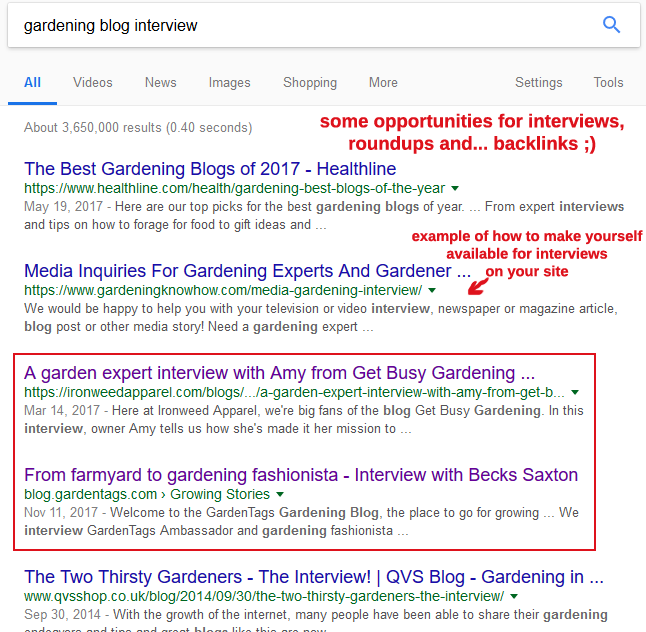
Resource Box
Easy-to-use PR platforms you can leverage right away are SourceBottle and HARO, where you can sign up for free to get the newest media queries by journalists through email.
You can also use MyBlogU to engage with other bloggers in need of expert insight for their blogs.
9. Get Listed in Industry Directories
Type: Outreach First
Summary: You submit your URL to industry directories you previously selected
Good ol' directories never disappoint, provided that you pick the best that your niche can offer!
What you should look for in a directory:
- Activity: Is this directory alive and well maintained?
- Quality: Do submissions go through editorial review?
- Traffic: What do Alexa and other factors (reviews, case studies, social shares, mentions, traffic numbers) tell you about the amount of niche traffic you can get from this directory?
- Backlink profile: Do you see anything spammy in this directory's backlink profile.
- The backlink you'll get: Does this directory reward you with a followed or a nofollow backlink?
Do your research before submission!
Example Niche Scenario
Let's use the example of a SaaS company serving lawyers with case management software. This company has found fewer opportunities to guest post and build links via outreach, so the marketing team decided to give trafficked SaaS directories a try.
They run a preliminary survey on their current clients to learn how they found the company, and they also scour the web for discussions other lawyers posted about case management software.
Based on that information, the team selects the industry directories that have the highest probability to drive customers the company's way (in this case, the company picks G2Crowd and Software Advice) and build permanent niche backlinks that will only benefit the company's profile, and submit the company website URL for review, including any relevant details the directory requests that they fill.
Here's a real-life example of a case management software company placing a listing on G2Crowd and earning its followed backlink on the software Profile tab:
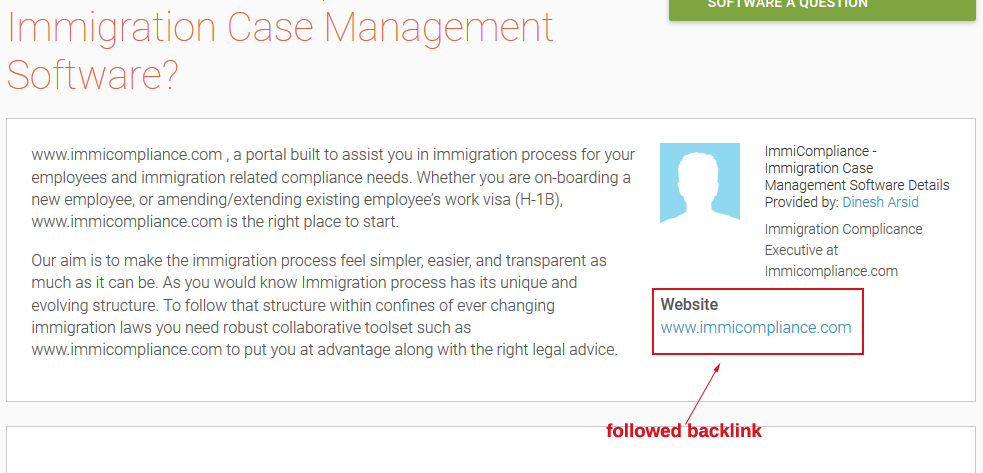
Resource Box
To find niche directories, Google search terms like:
- (niche) directory
- (niche) website directories
- submit URL (niche) directories
The latter term for the "gardening" niche returned a whopping 426,000 results! Nice!
10. Niche Blog Comments
Type: Outreach First
Summary: You find, read and comment on high-quality blog posts where you know the blogger is responsive.
Comments used to work in the early 2000s to obtain easy backlinks, but the growth of comment spam pushed bloggers to apply restrictions to the content allowed in comments, and (promotional) links are the main reason even good comments end up in spam.
Some niche bloggers started disabling comments altogether over the last years: One example is Copyblogger, which closed comments in 2014 and only recently reopened them for their audience.
But you can still use blog comments to create relationships, open opportunities for niche backlinks and generate leads for your business, if you have one (no kidding, Sujan Patel generated 513 leads using blog comments!). Read the example scenario below.
Example Niche Scenario
Say you run a marketing blog and you know not every marketing blog out there still allows live links (or followed links, anyway) in their comment forms, but you're aware that you'll get opportunities for building relationships that could open to link building. So you set to write valuable comments on a few top blogs in the marketing niche and engage with other commenters.
The more your name and expertise appear in the comments section, the better chances that the blogger and other readers note you and engage in more personal conversations with you.
When they do, you start asking questions about their site and offer to guest post on your blog on the topic you've been discussing, and are they open to welcome a guest post from you as well?
They say "yes"—go get your link!
See how it worked for these gals at the Mitenska blog:

Resource Box
Google websites in your niche and make a short list of high-quality blogs that allow comments and that you would love to get a backlink from.
Make it a plan to devote at least half an hour a week to reading and commenting new posts on these blogs, and ensure that your comments add plenty of value to the conversation.
11. Create Linkworthy Content
Type: Content First
Summary: You produce linkworthy content that naturally attracts backlinks or that you can pitch to webmasters.
Science and raw data don't lie.
Depending on how much you need to carve out your outcomes, data will always stay above point of view and interpretation of results.
This is why developing your own case studies, surveys, reports, whitepapers and other types of linkworthy content will naturally attract backlinks: Your data can be used more times, in more contexts and within time-based comparison content.
De facto, data-driven content is evergreen and stands against the quick obsolescence of online content.
Example Niche Scenario
A web analytics company wants to attract backlinks naturally in addition to outreach.
What's better than producing firsthand research that everybody can link out to as the authority in the industry?
The company asks their clients to help them produce case studies that will benefit both, and get a survey ready for web analytics users to share their analytics usage and what tools they find more helpful on the market, giving out both raw data and the company team's interpretation of results.
Once the research is ready, the PR department at the company sends it over the major distribution channels and makes it easily available on the company website, taking special care so it gets indexed faster, such as publishing a new blog post with a commentary and a backlink to the resource.
The company sees backlinks coming in naturally when the research gets cited and the marketing team's outreach work adds more backlinks and coverage to the mix.
But in addition to my imaginary web analytics company and how it applies what I explained in the section, let's see what a real company (AdRoll) achieved with one of its reports:

And the download page gives you a glimpse of why—it's all appealing data! (Hint: AdRoll also distributed this report on TradePub!)
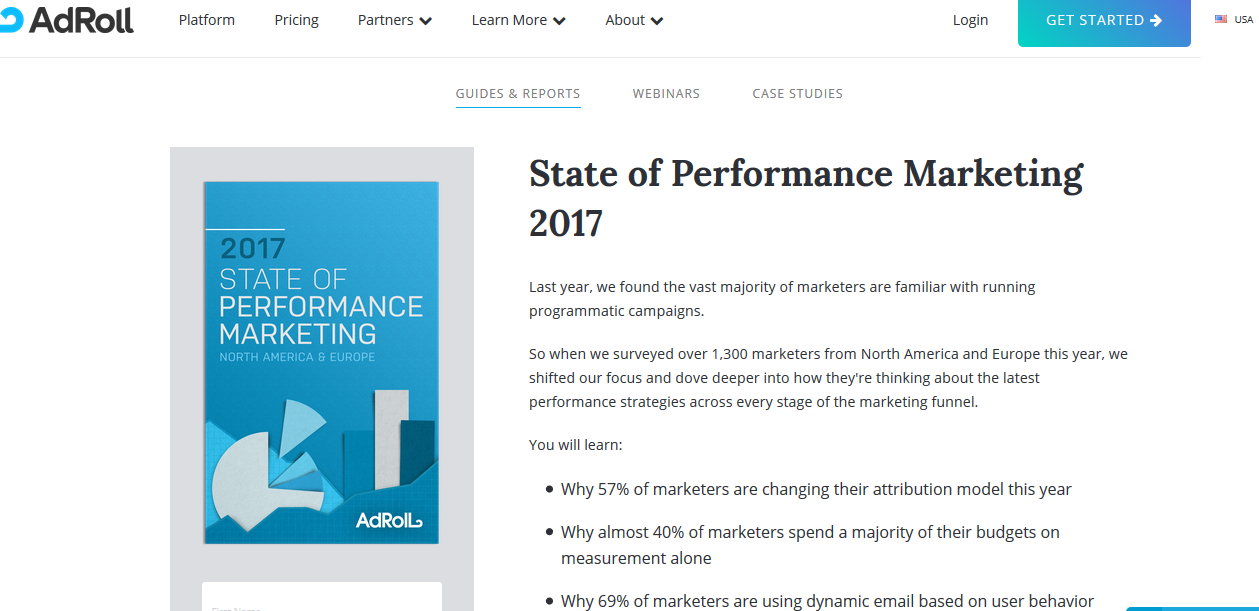
Resource Box
You can use distribution platforms like TradePub or Business2Community.com to distribute your research material.
Leveraging partnerships and collaborations with bloggers and other websites in your niche is another good idea to distribute your reports where the right audience will see it.
12. Conference and Webinar Talks
Type: Content First
Summary: You speak at conferences and webinars to get your name and expertise out and cited and linked online.
There are a number of reasons why you can easily earn niche backlinks when you talk at conferences or host (or are the guest of) a webinar:
- You as the speaker appear on the conference or webinar program page (often with a link to your site).
- Enthusiastic niche bloggers start talking about the event early, while it's still scheduled.
- Because you're one of the speakers or the guest of a webinar, people are going to show interest as soon as the event is announced, creating traffic to your website and linking to it from their sites and social accounts.
- You'll be forever cited as the expert who spoke at that event about a given topic and brought this and that wealth of knowledge to the field.
Example Niche Scenario
Let's imagine what an organization that encourages young girls to study mathematics may want to do.
They know the more powerful coverage and chance to get backlinks for a nonprofit is to get the word out at live events, so they set to participate in as many social issues and mathematics conferences and webinars and then produce press releases, talk material (transcripts, video recordings) and talk reports on their blog, covering the main points.
Backlinks start coming in when the a member of the organization gets a backlink of the speaker's page, when the speech gets mentioned and commented on niche blogs and news sites, and having talk-related content to the organization website makes for more linkable material.
For a real-life example, see how many (followed) backlink goodies this speaker got on the Content Marketing Conference speaker's page. (Warning: It might look too good to be true, but it's true!)
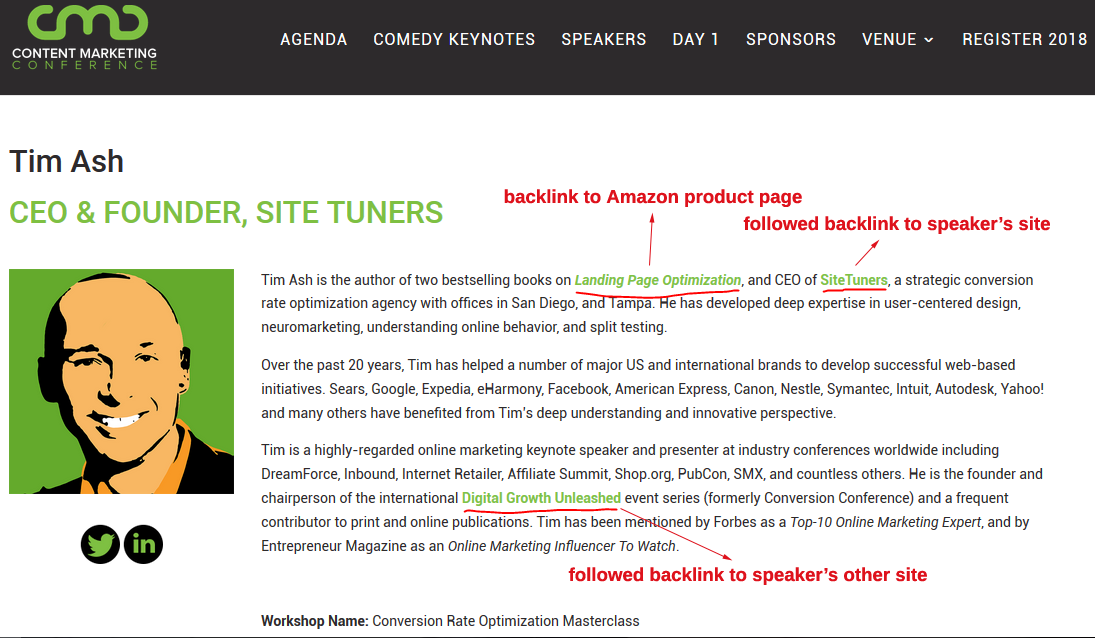
Resource Box
Local events in your niche are the best place to start, or you can do it online by creating your own webinar and make yourself available (on your contact page) to be invited as a guest to other people's webinars in the same niche.
13. Social Media Content Creation
Type: Content First
Summary: You create and share linkworthy social media content that you can pitch directly on the platform.
Niche backlinks from social media may not carry much link juice (if at all) but they have potential to bring in a lot of targeted traffic.
Additionally, social shares have their own importance as metrics when assessing the popularity of a piece of content.
But that's not all you can get from social: Like for niche communities, you can use social to develop relationships with other accounts talking about the same or similar topics and build opportunities for link building through reciprocal trust and collaboration.
Example Niche Scenario
Let's think about a mom & pop cheese business that loves to share cheese-based recipes with their audience on the company blog.
How can they get more engagement and attract natural backlinks? They decide to create a Facebook page and Instagram account to start sharing recipes with their audience, leveraging hashtags and platform ads and inviting similar pages and food bloggers to reshare that content.
As their food-related social contacts grow, the business selects a few that are better suited for a linkbuilding outreach campaign. This Instagram channel (@cheesy_travelers) may just work for them:
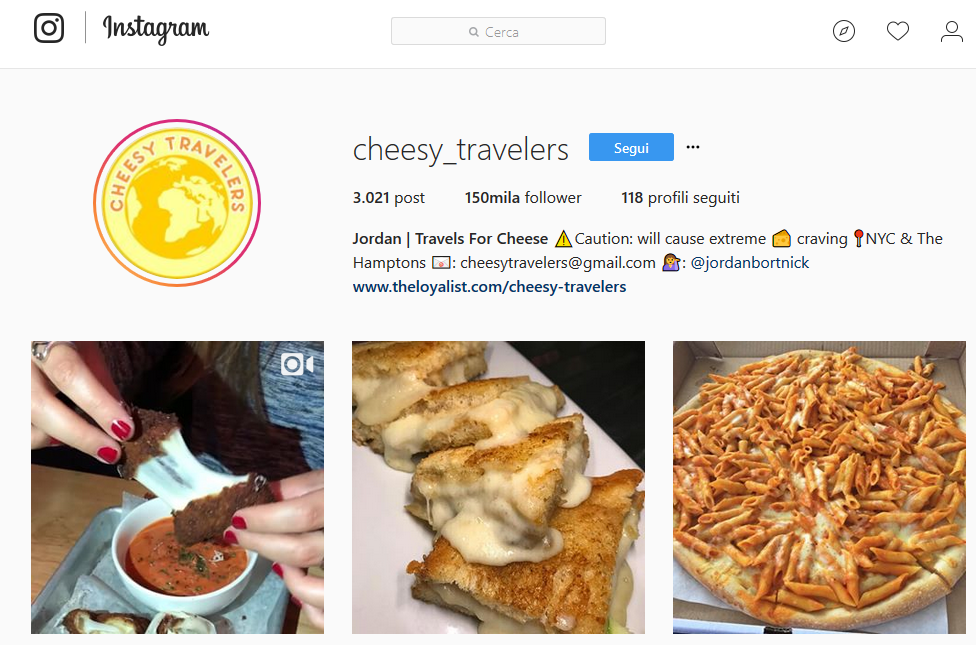
When the new contacts agree to the deal, the mom & pop cheese business obtains new relevant backlinks from the same niche.
Resource Box
As you build niche contacts on social media, create a digital rolodex in Excel or another tool of your choice to keep track of who they are, what they do and their website URL, along with a few pages that you could use resource pitching (#3 in this post) for.
14. Answer Audience's Questions
Type: Content First
Summary: You find and answer audience's questions on Q&A platforms and your blog, that will attract links.
Getting links for content that solves problems and answers questions isn't that hard—we all look for content that answers questions to link in our pieces!
I did it, too, with this article (both answering questions and linking out to content that answers more).
To get more out of this technique, combine it with outreach (resource pitching, see #1, #3 and #5 above).
Example Niche Scenario
Say you work in SEO and love spreading knowledge about it. You would know you can combine knowledge sharing with link building on Q&A platforms such like Quora, or even using your blog to redirect those who ask questions to the (long-form, compelling) posts on your or your client's website.
While Q&A platforms may not allow live links, you know you can still use text URLs that anyone who is searching for answers to include in their blog can copy in their browser to read and link back from their posts.
On a Quora post titled "What are the most effective linkbuilding methods in 2018?", one of the answers uses exactly this method:
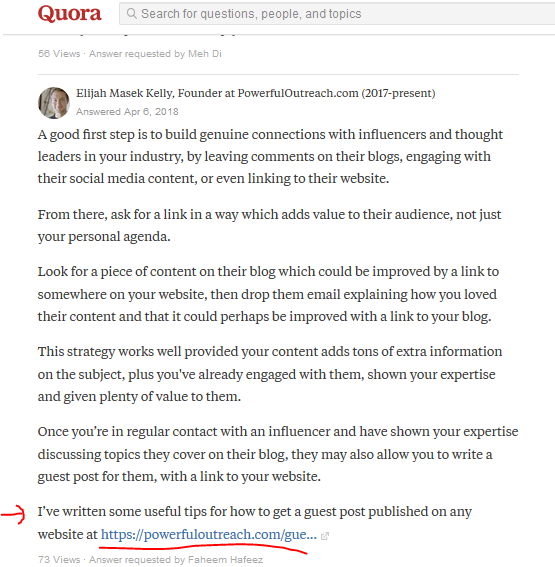
Resource Box
Browse platforms like Quora and Stack Overflow, niche forums and online communities to find questions you can answer to.
The best option for backlinks and traffic is to answer the question thoroughly on your blog and then post a short version of the answer on the platform, adding a link back to the full answer on your site.
Final Thoughts on Niche Backlinks
Finding niche backlink opportunities isn't that hard if you know what you're looking for and plan your way to obtain it.
Like targeted advertising, seeking niche backlinks is the surefire way to get the right traffic back to your website and to send relevancy signals to search engines, that will reward your site in the SERPs for appearing in the right contexts.
Time to go in discovery mode to find great websites in your niche and, with them, awesome link opportunities.
Good luck!
